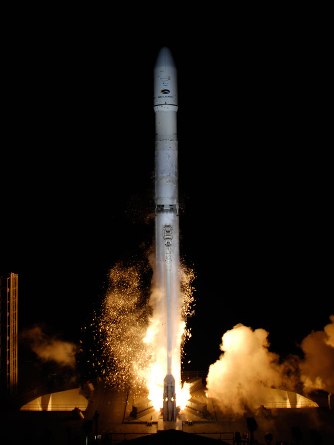A SeaLaunch Zenit launch vehicle experienced an 'unusual' event during the 31 May launch of Intelsat 19. Despite reaching its assigned transfer orbit, the Space Systems Loral LS-1300-based satellite fully deployed only one of its two solar arrays.
"Boeing engineers did note an unexpected, isolated event around 72sec after launch, which registered on microphones and pressure sensors," says Energia, which SeaLaunch contracts to deliver and launch the vehicles. "We have only seen this one other time out of the 31 flights and while it is premature to speculate on its origin until further analysis is complete, it bears a striking resemblance to a prior Space Systems/Loral mission."
Boeing builds the Zenit's payload adaptor, which is heavily instrumented to monitor the health of the spacecraft and satellite.
"The data available on Intelsat-19 very clearly indicates that this is not the same issue that we had last year," says Intelsat. "Not including Intelsat 19, five more 1300 satellites have been launched with ten successful solar array wing deployments."
 |
|---|
©SeaLaunch |
The prior mission referenced by Energia is the Telstar/Estrela do Sul 1 satellite, another LS-1300 bus which suffered a similar anomaly during liftoff, resulting in non-deployment of one of its solar arrays. According to the Flightglobal/Ascend database, "Sound sensors picked up an explosive sound during that part of flight and it is thought that the array broke then. Although the exact cause of the event could not be determined, telemetry data indicated that the fairing was not a cause or contributing factor to the event on the spacecraft."
Estrela do Sul 1 was declared a partial loss, and due to limited power and fuel it was retired after only five years of operation. The follow-on satellite, referenced by Intelsat, called Estrela do Sul 2, also deployed only a single solar array due to an unrelated problem.
Observers began to suspect a launch vehicle malfunction when SES elected to continue with the 20 June launch of SES 5, an LS-1300-based communications satellite. Were the satellite to blame, SES would likely have canceled the launch.
Source: Flight International



















